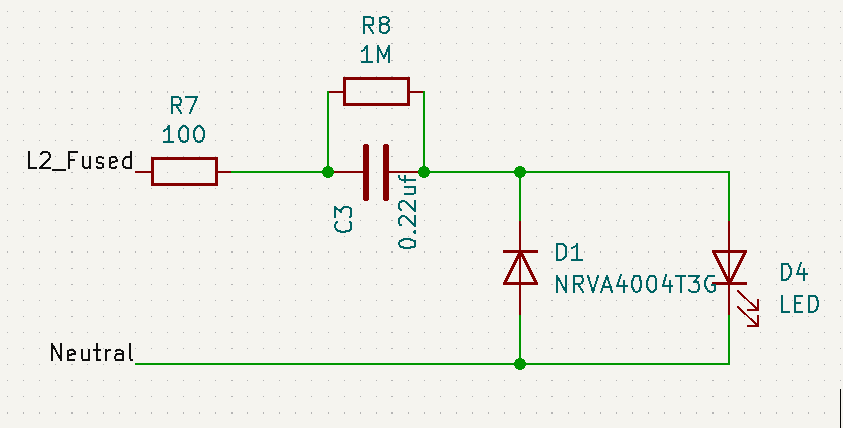I am using the circuit below to indicate the status of a 230V AC line.
This works well when I apply power to it. The LED is on with a good brightness.
However if I switch the main on and off and back very quickly the 100 Ω resistor (R7) gets fried. I have made several circuit of the kind and checked all polarity etc. This is mounted on PCB. Replacing the resistor make the circuit good again but if I dare switching the power too quickly it does the same again.
Any idea what could cause this?


